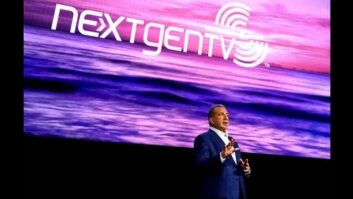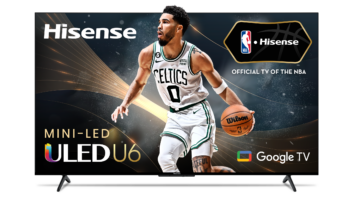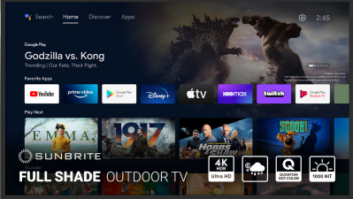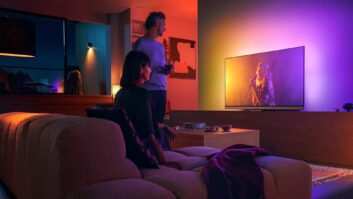Philips-brand ATSC 3.0 TVs available in 2019 in the U.S. market will incorporate Technicolor HDR technology, which is one of several HDR standards that TV stations could adopt when implementing the ATSC 3.0 broadcast standard to transmit over-the-air TV programs.
The announcement was made on the eve of CES 2018 by Funai Electric, the exclusive North American licensee for Philips consumer televisions and home video products.
Get this kind of CE coverage all year long — subscribe to the free TWICE eNewsletter.
Commercial ATSC 3.0 broadcasts are expected in late 2018 or early 2019, said Funai, which will demonstrate prototype Philips TVs using Technicolor HDR technology to display HDR content.
Funai also sees local pay-TV operators benefitting from Technicolor’s technology because it conserves bandwidth by simultaneously distributing HDR and SDR content through a single stream.
Technicolor HDR is also promoted as an end-to-end interoperable distribution solution that would help pay-TV operators, over-the-air broadcasters, and OTT providers manage the complexity of handling content in multiple HDR formats and handling a mix of HDR and SDR content. It turns any format — SDR, HDR 10 (upon which Dolby Vision is based), hybrid log gamma (HLG), S-log3, or any future HDR-format signal into a single stream with SDR and HDR compatibility. It then delivers the signal to such devices as TVs and set-top-boxes.
Depending on whether the display understands SDR, HDR 10 or HLG, the device either displays the HDR video in the HDR format in which it was produced or uses Technicolor’s metadata to adapt the signal to the display’s capability. Technicolor’s metadata also up-converts SDR content to HDR-like performance, which will come in handy if SDR commercials are spliced into HDR programs.
The ATSC 3.0 broadcast standard also incorporates other optional HDR technologies, including the hybrid log gamma (HLG) and PQ (perceptual quantizer) EOTFs (electro optical transfer function). The latter can be paired with HDR 10 static metadata. The ATSC organization is also considering Samsung-backed SMPTE 2094-40 dynamic metadata (similar to HDR10+) and SMPTE 2094-20 dynamic metadata (similar to Dolby Vision) as options.
“We believe that Technicolor HDR with its superior quality will deliver an exceptional viewing experience when watching over-the-air TV or RF/cable,” said Peter Swinkels, GM of Funai’ Electric’s overseas product planning department.
Select Philips TVs already support HDR 10 and Dolby Vision.
ATSC 3.0: IP-based ATSC 3.0 promises an effective bandwidth boost of 4X or more to improve resolution to 1080p or 4K with HDR, wide color gamut (WCG), and frame rates up to 120Hz. Stations currently deliver a maximum resolution of 1080i.
ATSC 3.0 also promises higher peak power output, improved error correction, and other techniques to extend range and, for homes with indoor antennas, improve in-building penetration. Reception improves further if stations build a single-frequency network (SFN), which uses multiple broadcast antennas in a market to fill in coverage gaps created by hills and other obstructions.
A mobile-service option could expand over-the-air audiences to on-the-go viewers toting mobile devices incorporating 3.0 tuners.
IP-based interactivity will enable consumers to access live free over-the-air TV but get personalized content options delivered over the Internet or over the air. Personalized, interactive options could include the selection of home- or visiting-team sports commentary or one of several camera angles to watch during a game. Viewers could also choose whether to watch a sports game in overtime or watch the regularly scheduled program.
Stations would also be able to target adds to ZIP codes or to individual households.













